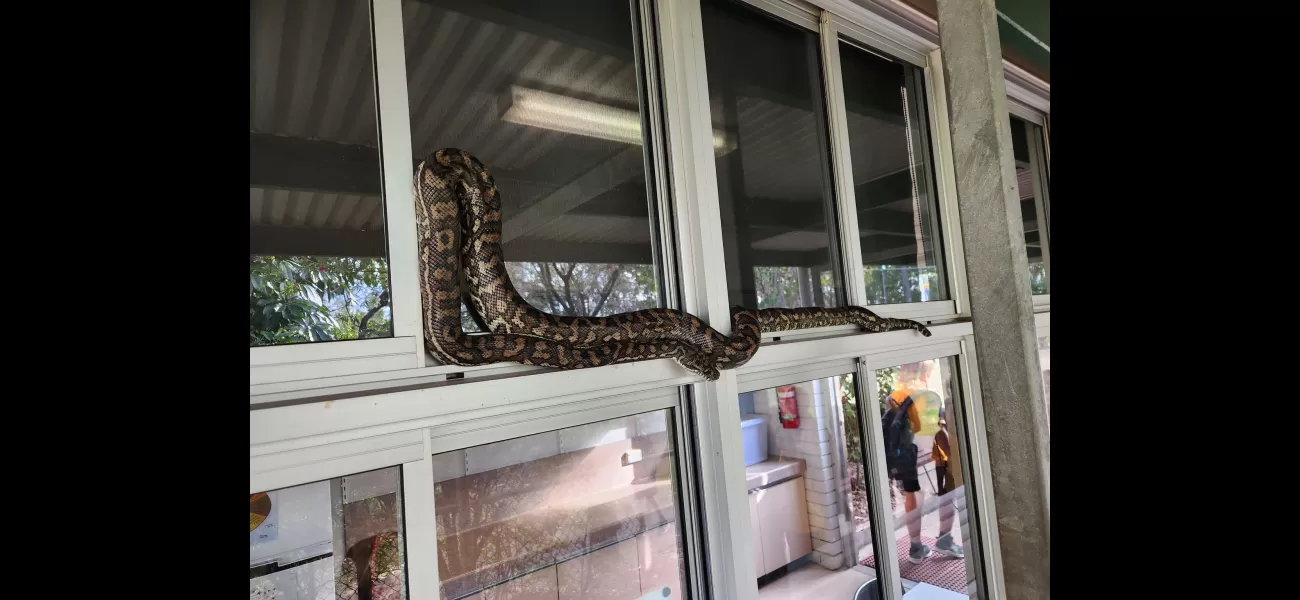Experts caution that snakes are becoming more active due to the mild end to winter.
Higher temperatures in parts of Queensland and New South Wales could bring out more snakes, according to experts.
August 26th 2024.

As the days grow warmer, snakes are starting to make their way out earlier than usual in South East Queensland and northern New South Wales. The region is experiencing an unseasonably warm end to winter, with temperatures in Brisbane predicted to reach a high of 34C this Saturday. This trend is expected to continue throughout Queensland and the north-east corner of New South Wales for the rest of the week.
According to Professor Bryan Fry from the University of Queensland's School of the Environment, this change in weather is causing an increase in reptile activity. As prey animals like skinks and frogs become more active, snakes are also venturing out in search of food. "Absolutely, snakes are on the move," he stated. "The warmer weather is a sign for them to start their activities. We've already replaced our winter blankets with lighter ones, which is about a month and a half earlier than usual."
During winter, snakes go into a dormant state called brumation, where they stop eating and their metabolism slows down due to the drop in temperature. They usually find a sheltered spot to hide and stay there until the weather warms up. However, with the rise in temperature and sunny days, snakes may still be spotted outside. This is a result of the changes in seasonal weather patterns and the increase in temperature extremes.
Fry also mentioned that these changes have extended the snake season, making human encounters more common. "Instead of snakes being inactive at 10pm or 11pm, we might see them moving around all night long," he explained. "As the temperature rises, snakes will seek refuge in places like garages, under houses, and even inside. They are just trying to find a cool spot to avoid the heat."
Having lived in Brisbane for 30 years, Fry has noticed a significant change in the seasons. "It has never been this warm this early," he noted. John Grant, a spokesperson for wildlife rescue organization WIRES, reported that they have been receiving the same number of calls as last year, which was Australia's warmest winter on record. In Melbourne, snake catcher Mark Pelley has also been receiving consistent calls for help removing snakes from buildings.
Pelley expressed his surprise at the early appearance of snakes this year. "I usually don't expect to see them until it gets really hot, but they seem to have all come out at once," he said. Fry estimates that almost half of all snake bites could be avoided if people were more cautious and treated all snakes as potentially venomous. "It's important to remember that these are dangerous animals and if you act recklessly around them, you could end up in the hospital," he warned.
In the event of a snake bite, experts advise moving away from the snake, removing any jewelry, and applying a pressure bandage. The bandage should be wrapped below the bite site and then upward over the wound. The bitten area should be kept still, and emergency services should be contacted immediately. As the effects of climate change continue to be felt, it is crucial to remember that even the smallest changes in weather patterns can have a significant impact on our environment and the animals that inhabit it.
According to Professor Bryan Fry from the University of Queensland's School of the Environment, this change in weather is causing an increase in reptile activity. As prey animals like skinks and frogs become more active, snakes are also venturing out in search of food. "Absolutely, snakes are on the move," he stated. "The warmer weather is a sign for them to start their activities. We've already replaced our winter blankets with lighter ones, which is about a month and a half earlier than usual."
During winter, snakes go into a dormant state called brumation, where they stop eating and their metabolism slows down due to the drop in temperature. They usually find a sheltered spot to hide and stay there until the weather warms up. However, with the rise in temperature and sunny days, snakes may still be spotted outside. This is a result of the changes in seasonal weather patterns and the increase in temperature extremes.
Fry also mentioned that these changes have extended the snake season, making human encounters more common. "Instead of snakes being inactive at 10pm or 11pm, we might see them moving around all night long," he explained. "As the temperature rises, snakes will seek refuge in places like garages, under houses, and even inside. They are just trying to find a cool spot to avoid the heat."
Having lived in Brisbane for 30 years, Fry has noticed a significant change in the seasons. "It has never been this warm this early," he noted. John Grant, a spokesperson for wildlife rescue organization WIRES, reported that they have been receiving the same number of calls as last year, which was Australia's warmest winter on record. In Melbourne, snake catcher Mark Pelley has also been receiving consistent calls for help removing snakes from buildings.
Pelley expressed his surprise at the early appearance of snakes this year. "I usually don't expect to see them until it gets really hot, but they seem to have all come out at once," he said. Fry estimates that almost half of all snake bites could be avoided if people were more cautious and treated all snakes as potentially venomous. "It's important to remember that these are dangerous animals and if you act recklessly around them, you could end up in the hospital," he warned.
In the event of a snake bite, experts advise moving away from the snake, removing any jewelry, and applying a pressure bandage. The bandage should be wrapped below the bite site and then upward over the wound. The bitten area should be kept still, and emergency services should be contacted immediately. As the effects of climate change continue to be felt, it is crucial to remember that even the smallest changes in weather patterns can have a significant impact on our environment and the animals that inhabit it.
[This article has been trending online recently and has been generated with AI. Your feed is customized.]
[Generative AI is experimental.]
0
0
Submit Comment





